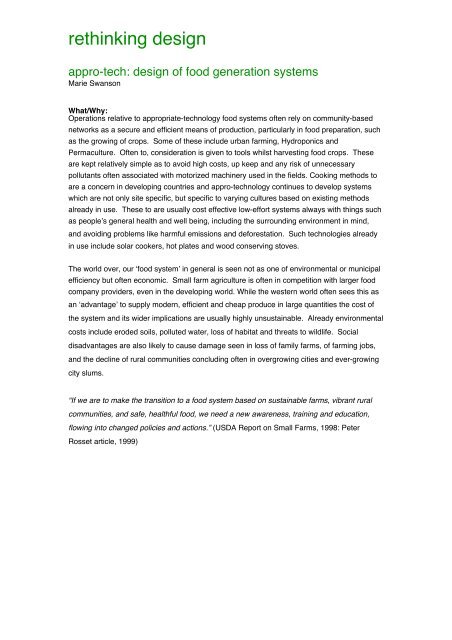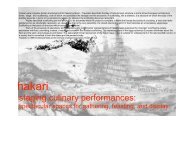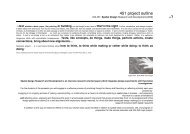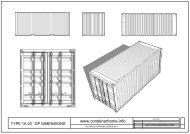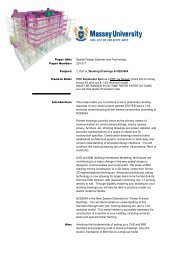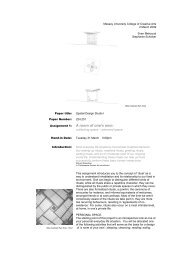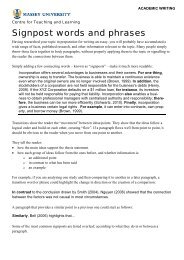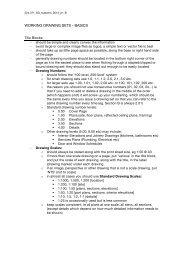rethinking design - Spatial Design@Massey
rethinking design - Spatial Design@Massey
rethinking design - Spatial Design@Massey
You also want an ePaper? Increase the reach of your titles
YUMPU automatically turns print PDFs into web optimized ePapers that Google loves.
ethinking <strong>design</strong><br />
appro-tech: <strong>design</strong> of food generation systems<br />
Marie Swanson<br />
What/Why:<br />
Operations relative to appropriate-technology food systems often rely on community-based<br />
networks as a secure and efficient means of production, particularly in food preparation, such<br />
as the growing of crops. Some of these include urban farming, Hydroponics and<br />
Permaculture. Often to, consideration is given to tools whilst harvesting food crops. These<br />
are kept relatively simple as to avoid high costs, up keep and any risk of unnecessary<br />
pollutants often associated with motorized machinery used in the fields. Cooking methods to<br />
are a concern in developing countries and appro-technology continues to develop systems<br />
which are not only site specific, but specific to varying cultures based on existing methods<br />
already in use. These to are usually cost effective low-effort systems always with things such<br />
as peopleʼs general health and well being, including the surrounding environment in mind,<br />
and avoiding problems like harmful emissions and deforestation. Such technologies already<br />
in use include solar cookers, hot plates and wood conserving stoves.<br />
The world over, our ʻfood systemʼ in general is seen not as one of environmental or municipal<br />
efficiency but often economic. Small farm agriculture is often in competition with larger food<br />
company providers, even in the developing world. While the western world often sees this as<br />
an ʻadvantageʼ to supply modern, efficient and cheap produce in large quantities the cost of<br />
the system and its wider implications are usually highly unsustainable. Already environmental<br />
costs include eroded soils, polluted water, loss of habitat and threats to wildlife. Social<br />
disadvantages are also likely to cause damage seen in loss of family farms, of farming jobs,<br />
and the decline of rural communities concluding often in overgrowing cities and ever-growing<br />
city slums.<br />
“If we are to make the transition to a food system based on sustainable farms, vibrant rural<br />
communities, and safe, healthful food, we need a new awareness, training and education,<br />
flowing into changed policies and actions.” (USDA Report on Small Farms, 1998: Peter<br />
Rosset article, 1999)


